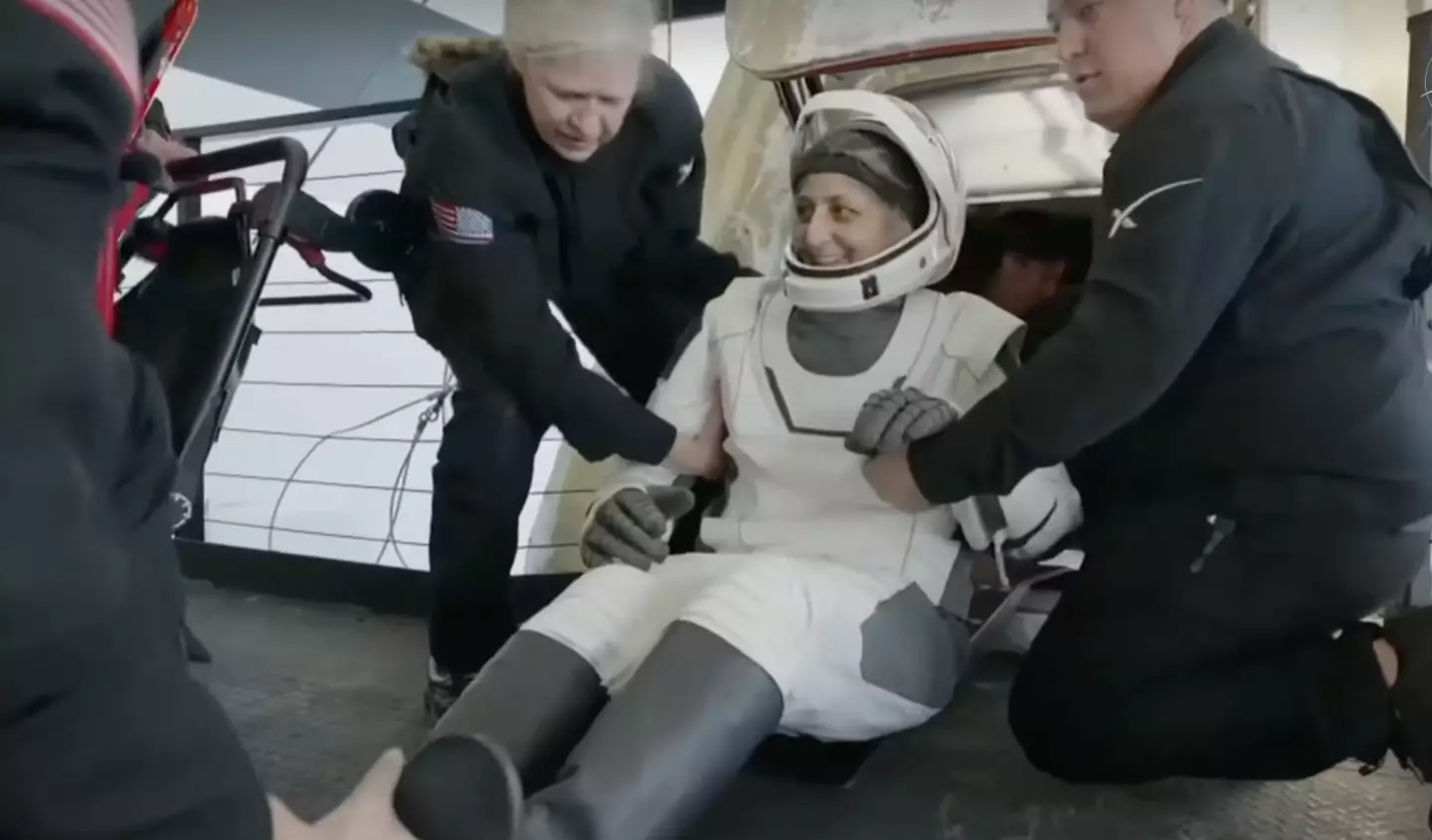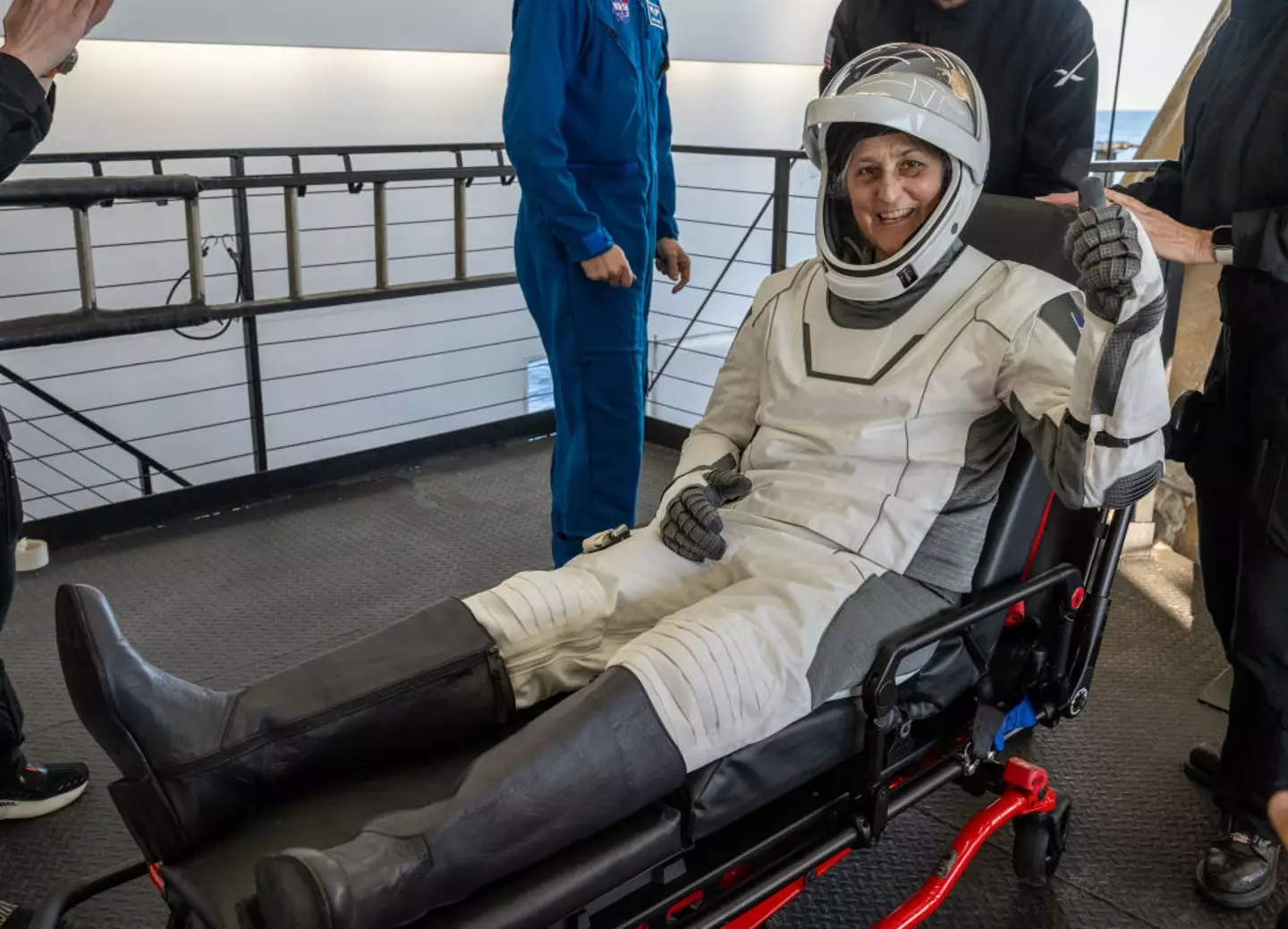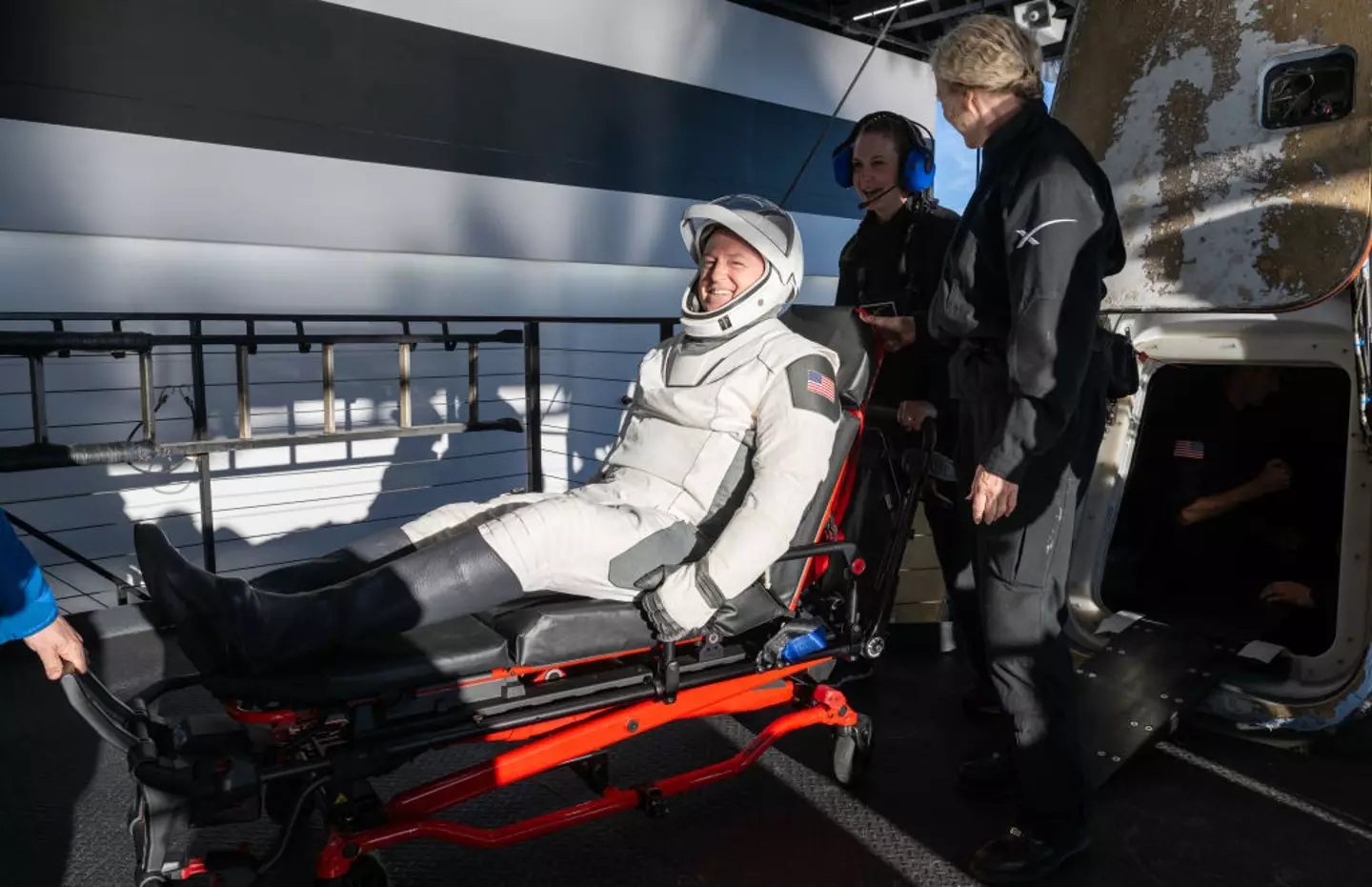Before and after photos of stranded astronauts back on Earth reveal shocking impact of being stuck in space for nine months


Williams couldn’t walk when she came out of the spacecraft (NASA)


Suni Williams back on Earth (Keegan Barber/NASA via Getty Images)
Under the surface, experts say they could have a build-up of fluids in their head due to pressure on their eyes and optical nerves, which could affect their appearance.
There’s even a term for this, Spaceflight Associated Neuro-Ocular Syndrome (SANS), which is responsible for swelling in the optic nerve and causing blurry or fuzzy vision.
While many astronauts’ eyes return to normal when they come to Earth, NASA says some side effects could be permanent – and depends on how long the team remain in space, which is concerning for the pair given their extended mission.
As for their cognitive functions, the changing pressures in the brain coupled with stress and lack of sleep could lead to decline as seen before in some astronauts.


Butch Wilmore after splashdown (Keegan Barber/NASA via Getty Images)
But microgravity presents the largest risk to the pair as without the Earth’s pull, astronauts’ muscles weaken over time and can mean they struggle to maintain a healthy weight.
This also explains why the pair were unable to walk when they first landed on Earth.
Despite their intense exercise regime and high calorie diet aboard the ISS, they can still suffer from muscle atrophy, which could also be contributing towards their frail appearance.
Then there’s also Spaceflight Venous Thrombosis (SVT), which involves an upward fluid shift and can make the face look ‘puffy’, which is propelled by essentially hanging upside down.
Fortunately, NASA says most astronauts return to their re-mission fitness levels after 45 days though in severe cases, it can take months or even year to recover.
Retired British astronaut Tim Peake said on RadioX: “For me, going into space was no problem at all, but for the first two days on Earth, I felt pretty rough.
“I think Butch and Suni will be feeling a bit rough right now. You know, the whole body is just getting used to gravity. The vestibular systems a bit messed up. You feel dizzy, a bit nauseous. So, it’ll take them a couple of days to get over that.”
